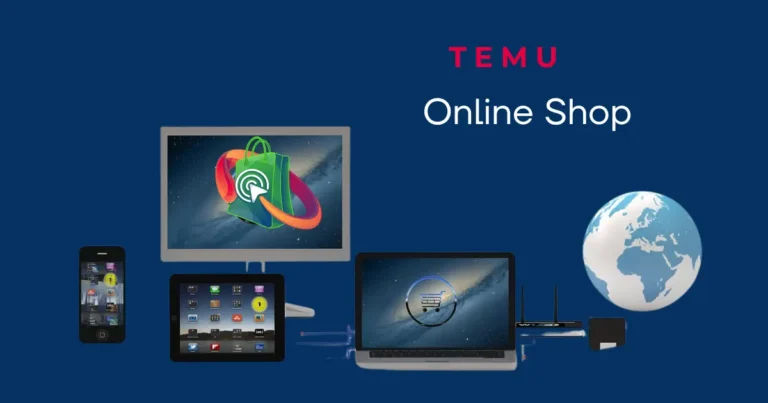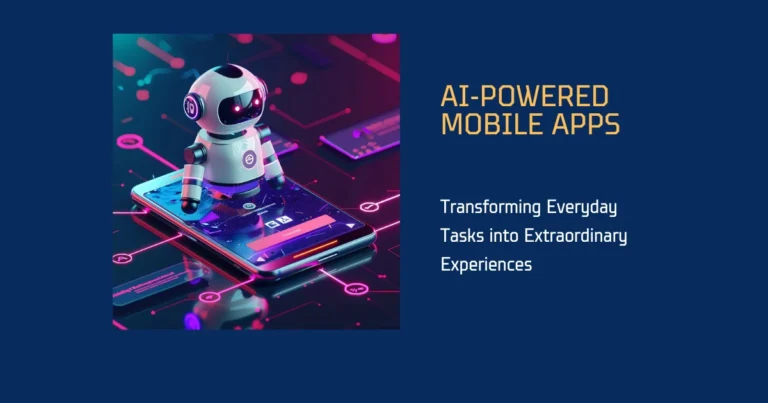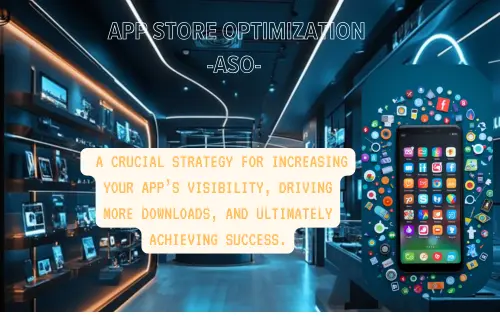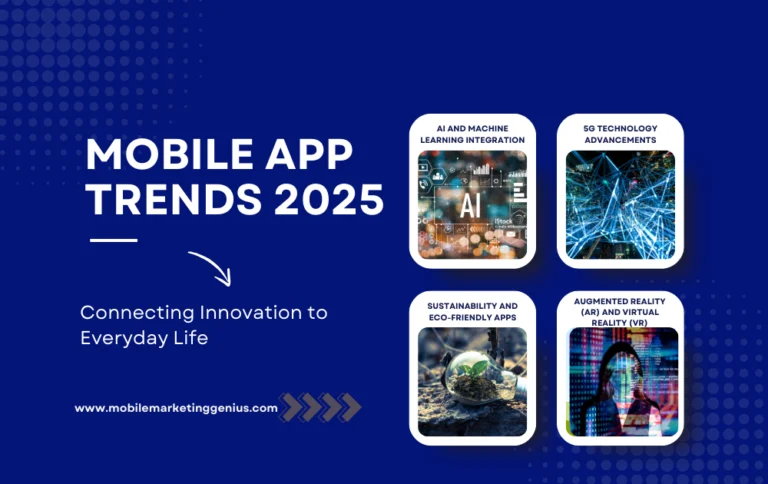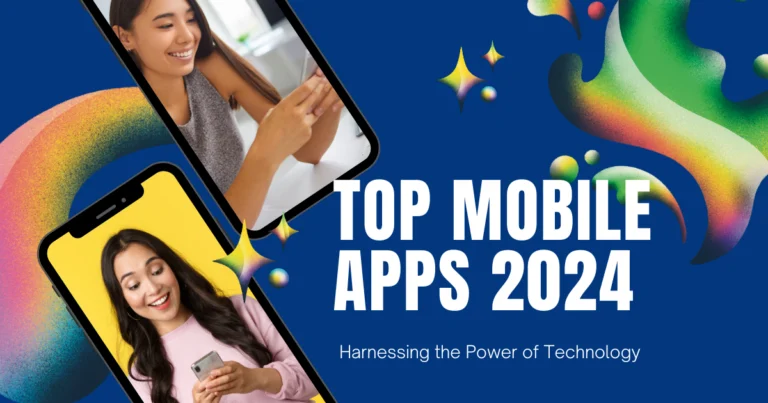Gamification in Shopping Apps: How E-Commerce is Leveraging Rewards and Engagement to Drive Sales
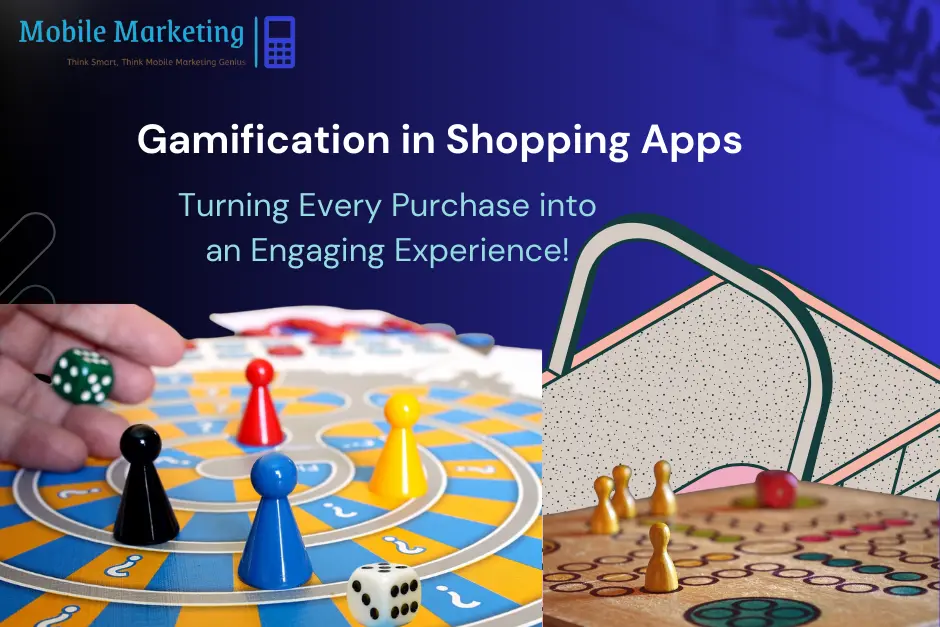
E-commerce has evolved beyond simple online transactions—today’s consumers expect interactive and engaging shopping experiences. With countless shopping apps vying for attention, brands must find innovative ways to capture user interest, increase retention, and drive conversions. This is where gamification in shopping apps comes in.
By incorporating game-like elements such as rewards, challenges, leaderboards, and interactive tasks, gamification in shopping apps motivates users to return, explore, and make purchases in a more dynamic way. Leading e-commerce giants like Amazon, AliExpress, and SHEIN have already implemented successful gamified shopping experiences, proving that playful engagement can translate into real business growth.
In this article, we’ll explore how gamification in shopping apps is reshaping e-commerce, diving into its benefits, key strategies, challenges, and future trends.
Table of Contents
Introduction: Gamification in Shopping Apps – Transforming E-Commerce Engagement
The rise of mobile commerce has transformed the way people shop. With smartphones becoming the primary shopping tool, brands need to keep users engaged beyond just product listings and checkout pages. Gamification in shopping apps achieves this by turning everyday shopping into an interactive, rewarding, and enjoyable experience.
At its core, gamification taps into psychological motivators like competition, achievement, and instant gratification. Whether through loyalty programs, daily check-ins, spin-to-win promotions, or AR-based challenges, these elements encourage users to return, participate, and ultimately spend more.
By successfully integrating gamification, brands can increase user engagement, boost conversions, and strengthen customer loyalty. The next section will provide a deeper understanding of what gamification is and why it works so well in e-commerce.

Understanding Gamification in E-Commerce
1. What is Gamification?
Gamification refers to the integration of game-like elements into non-gaming environments to drive user engagement, motivation, and loyalty. In e-commerce, it involves applying game mechanics such as rewards, challenges, leaderboards, and interactive tasks to enhance the shopping experience. By leveraging elements of competition, achievement, and instant gratification, gamification makes online shopping more engaging and rewarding for users.
The key principle behind gamification is behavioral psychology, particularly the concept of reward-driven engagement. When users are incentivized with points, badges, discounts, or exclusive perks, they are more likely to return, interact, and ultimately make more purchases. This technique not only boosts customer retention but also encourages word-of-mouth marketing, as satisfied users share their experiences with friends and social networks.
2. Why is Gamification Effective in E-Commerce?
- Encourages User Engagement – Gamified elements like daily check-ins, progress bars, and interactive games keep users engaged and motivate them to return regularly.
- Boosts Conversion Rates – By offering personalized rewards and exclusive discounts through challenges, users are more likely to complete purchases.
- Enhances Customer Loyalty – Loyalty programs that reward purchases and participation create long-term customer relationships and increased lifetime value.
- Creates an Interactive Shopping Experience – Instead of a passive browsing experience, gamification makes shopping dynamic and enjoyable.
3. Examples of Gamification in Shopping Apps
Many leading e-commerce platforms have successfully incorporated gamification into their shopping experiences:
- AliExpress Coins & Coupons – Users earn coins through daily check-ins, games, and purchases, which can be redeemed for discounts.
- SHEIN Daily Check-In Rewards – Customers receive daily points for logging in, which accumulate into redeemable discounts.
- Nike Run Club – Uses gamification to encourage purchases by rewarding users for fitness achievements with exclusive discounts.
- Starbucks Rewards – Customers earn stars for purchases, which can be redeemed for free drinks and exclusive perks.
Gamification in shopping apps is not just about adding game elements; it’s about strategically designing an experience that encourages actions that benefit both the business and the customer. In the next section, we will explore how gamification is reshaping shopping apps and its impact on e-commerce trends.
How Gamification is Reshaping Shopping Apps
The rapid growth of mobile commerce has driven businesses to seek innovative ways to keep shoppers engaged, and gamification has emerged as a powerful strategy. By integrating game-like features into shopping apps, e-commerce brands are transforming the user experience from a simple transactional process into an interactive and enjoyable journey. This shift is reshaping consumer behavior, increasing app retention rates, and significantly boosting sales.
1. Enhancing Customer Engagement and Retention
Traditional shopping apps focus primarily on product listings, discounts, and checkout processes. However, modern consumers seek more than just convenience—they crave engagement. Gamification enhances this by making the shopping experience more interactive through challenges, reward-based incentives, and progress tracking.
For example, AliExpress has successfully introduced “Coins & Coupons,” where users earn digital coins through daily check-ins, completing small tasks, or playing in-app games. These coins can be redeemed for discounts, which incentivizes users to return regularly and make purchases. Similarly, Amazon’s Spin & Win promotions create excitement by allowing users to spin a virtual wheel for a chance to win exclusive discounts.
Studies show that gamified shopping experiences significantly increase session time, leading to higher conversion rates. Instead of merely browsing and exiting, users engage longer with the app, increasing their likelihood of making a purchase.
2. Driving Sales with Loyalty Programs and Gamified Rewards
Gamified loyalty programs have become a cornerstone of e-commerce success. Brands now use point-based reward systems, tiered memberships, and exclusive challenges to motivate repeat purchases.
- Starbucks Rewards: Customers earn stars for each purchase, unlocking higher reward tiers and exclusive perks.
- Nike Run Club: Users receive virtual trophies and milestones, which can translate into discounts for athletic gear.
- SHEIN Points Program: Users earn points not just for purchases, but also for reviewing products, participating in outfit challenges, and engaging with the community.
Such programs increase brand loyalty and create long-term customer relationships. Instead of one-time purchases, users are encouraged to continue engaging with the app, making repeat purchases in pursuit of rewards.
3. The Role of Social and Competitive Elements in Shopping Apps
Gamification in shopping apps is not just about personal rewards—many brands are leveraging social engagement and competition to drive interactions.
- Leaderboard-based Challenges: Some apps introduce challenges where users compete with friends or a broader community to earn rewards.
- Referral-based Gamification: Apps like Rakuten offer cashback incentives through referral challenges, encouraging users to invite their friends to earn more.
- Social Sharing Features: SHEIN and other fashion apps encourage users to share outfit choices on social media for extra discounts or exclusive early access to sales.
These social and competitive elements create a community-driven shopping experience, making users feel more connected to the brand and motivated to return.
4. Personalization and AI-Driven Gamification
AI and data analytics are further enhancing gamified experiences by personalizing challenges, discounts, and rewards based on user behavior. Apps now track shopping habits to offer tailored gamified incentives, ensuring users feel personally rewarded for their engagement.
For example, if a user frequently buys skincare products, the app might offer a “Skin Care Streak Challenge” where making multiple purchases within a set period unlocks additional discounts. This level of personalization enhances user satisfaction and increases conversions.
5. The Impact on E-Commerce Success
By integrating game mechanics into shopping apps, brands are experiencing higher engagement, greater customer retention, and increased revenue. Gamification is no longer just an optional feature—it is becoming a necessity for e-commerce platforms looking to stand out in a competitive market.
In the next section, we’ll explore the best gamification strategies that brands are using to maximize user engagement and drive e-commerce success.
Key Gamification Strategies for Shopping Apps
The success of gamification in shopping apps depends on effective strategies that engage users, encourage repeat visits, and drive conversions. By integrating game mechanics like rewards, challenges, and interactive elements, e-commerce businesses can create an immersive shopping experience that enhances user retention and boosts sales. Below are some of the most effective gamification strategies that shopping apps are using today.
1. Loyalty Programs & Rewards Systems
One of the most widely used gamification techniques in e-commerce is loyalty programs that reward customers for their engagement and purchases. These programs incentivize users to return regularly, make repeat purchases, and unlock exclusive benefits.
Examples:
- Starbucks Rewards: Customers earn stars for every purchase, which accumulate into redeemable rewards like free drinks and discounts.
- Nike Run Club: Encourages users to complete fitness goals and earn digital trophies, which can lead to special offers on Nike gear.
- SHEIN Points Program: Users collect points for daily check-ins, reviewing products, and sharing purchases, leading to additional discounts.
Why It Works:
Loyalty programs create long-term engagement, making users feel valued and motivated to continue shopping. The sense of achievement and exclusivity encourages brand loyalty.
2. Spin-to-Win & Instant Gratification Games
Many shopping apps leverage “Spin the Wheel” or scratch card games to give customers an instant chance to win discounts, coupons, or free shipping.
Examples:
- Amazon Spin & Win: Users spin a digital wheel to unlock limited-time discounts.
- AliExpress Daily Games: Offers mini-games where users collect rewards or redeem discount coupons.
- Wish Daily Deals: Users participate in “Price Drops” and lottery-style games to earn exclusive offers.
Why It Works:
- Triggers excitement and anticipation, making users more likely to redeem their winnings.
- Encourages daily engagement, increasing app retention rates.
- Provides a fun shopping experience, leading to higher conversions.
3. Challenges, Missions, and Streak-Based Rewards
Encouraging users to complete challenges over a period of time helps build shopping habits and boosts customer engagement.
Examples:
- SHEIN Daily Check-In Rewards: Users log in every day to earn increasing points, redeemable for discounts.
- Nike Run Club Challenges: Users complete fitness milestones to unlock exclusive rewards.
- AliExpress Shopping Streaks: Reward users for consecutive days of app usage with extra coins or special discounts.
Why It Works:
- Encourages habit formation, increasing repeat app visits.
- Makes shopping a goal-oriented experience, boosting engagement.
- Offers progress tracking, keeping users motivated.
4. Referral-Based Gamification for Social Sharing
Gamification isn’t just about individual engagement—social elements play a huge role in user participation. Many shopping apps reward customers for referring friends or sharing purchases on social media.
Examples:
- Rakuten Referral Program: Gives users cashback bonuses for referring new shoppers.
- Temu Invite & Earn: Users invite friends and earn points or cash rewards for successful referrals.
- AliExpress Group Buying Discounts: Encourages users to share deals with friends to unlock better discounts.
Why It Works:
- Drives word-of-mouth marketing, bringing in new customers.
- Creates a social shopping experience, making purchases more engaging.
- Rewards users for expanding the brand’s reach, increasing app traffic.
5. Augmented Reality (AR) & Interactive Gamification
Advancements in AR technology allow brands to create immersive, gamified shopping experiences that encourage users to interact with products before purchasing.
Examples:
- Sephora Virtual Try-On: Uses AR to let customers try makeup products virtually.
- IKEA Place App: Allows users to visualize furniture in their homes before making a purchase.
- Nike Fit: Uses AR to measure a user’s foot size and recommend shoe sizes.
Why It Works:
- Enhances the shopping experience with interactive engagement.
- Reduces purchase hesitation by allowing users to see products in action.
- Increases conversion rates through better-informed purchasing decisions.
6. Personalized Gamification with AI & Data Analytics
Many e-commerce brands are now using AI-driven gamification to personalize rewards and challenges based on user behavior.
Examples:
- Amazon Personalized Offers: Users receive special game-based discounts based on their shopping history.
- eBay’s Dynamic Pricing Games: Encourages bidding and real-time competitive shopping.
- Zalando’s Personalized Missions: Users complete shopping challenges tailored to their preferences.
Why It Works:
- Enhances user experience by offering relevant rewards.
- Increases engagement through customized challenges.
- Helps businesses collect valuable user behavior insights for better marketing strategies.
Final Thoughts
Gamification strategies in shopping apps transform traditional e-commerce experiences into interactive, rewarding, and engaging journeys. Whether through loyalty programs, instant rewards, social referrals, or AI-driven personalization, brands that incorporate gamification enhance user engagement, drive repeat purchases, and increase sales.
In the next section, we’ll explore the major benefits of gamification in e-commerce and how it positively impacts business growth.
Benefits of Gamification in E-Commerce
Gamification has revolutionized the e-commerce industry by making shopping apps more engaging, interactive, and rewarding for users. By integrating game-like elements such as points, rewards, challenges, and leaderboards, businesses are seeing higher customer retention, increased conversion rates, and stronger brand loyalty. Below are the key benefits of gamification in shopping apps and why it has become a game-changer in the digital shopping experience.

1. Increased Customer Engagement and Retention
One of the biggest challenges e-commerce brands face is keeping users engaged and preventing app abandonment. Gamification helps by making the shopping experience fun and rewarding, encouraging users to return regularly. Brands using gamification see up to a 30% increase in customer retention.
Examples:
- SHEIN’s Daily Check-In Rewards offer users points every day they log into the app, creating a habit-forming experience.
- AliExpress Coins & Coupons incentivize shoppers to complete tasks, play games, and earn rewards, keeping them engaged for longer periods.
Why It Works:
- Users develop a habit of returning to the app daily.
- Interactive tasks make shopping more enjoyable and engaging.
- Higher engagement leads to better customer retention rates.
2. Higher Conversion Rates and Sales Growth
Gamification not only keeps users engaged but also encourages them to complete purchases by offering incentives like discounts, cashback, and exclusive rewards.
Examples:
- Amazon’s Spin & Win gives users a chance to win discounts or limited-time deals, motivating them to make a purchase.
- Nike Run Club rewards users for achieving fitness goals, increasing the likelihood of purchasing Nike products.
Why It Works:
- Creates a sense of urgency that pushes users to buy.
- Encourages users to spend more to unlock rewards.
- Reduces shopping cart abandonment rates.
3. Strengthens Customer Loyalty and Brand Connection
A well-designed loyalty program enhances customer relationships and builds a sense of belonging. When users feel rewarded for their engagement, they are more likely to stick with the brand.
Examples:
- Starbucks Rewards offers stars that customers can redeem for free drinks, creating a strong sense of loyalty.
- Sephora’s Beauty Insider Program gamifies shopping by giving points for purchases, rewarding customers with exclusive perks.
Why It Works:
- Customers feel valued and recognized.
- Encourages repeat purchases and long-term engagement.
- Strengthens brand loyalty and customer trust.
4. Encourages Social Sharing and Word-of-Mouth Marketing
Gamification elements that involve leaderboards, referral rewards, and social challenges encourage users to share their experiences with friends, expanding the brand’s reach.
Examples:
- Rakuten Referral Program rewards users with cashback for inviting friends, creating a viral loop of referrals.
- Temu’s Invite & Earn encourages users to share the app in exchange for points or cash rewards.
Why It Works:
- Drives organic traffic and customer acquisition.
- Encourages users to spread the word about the brand.
- Creates a community-driven shopping experience.
5. Enhances User Experience and Personalization
Gamification, when powered by AI and data analytics, can be tailored to user behavior, making shopping experiences more personalized and enjoyable.
Examples:
- Amazon’s AI-powered recommendations offer personalized discounts and gamified promotions based on user shopping habits.
- Nike’s Personalized Fitness Challenges help users set goals and earn rewards for completing them.
Why It Works:
- Increases user satisfaction by offering relevant rewards.
- Makes shopping feel more interactive and engaging.
- Provides valuable insights for businesses to optimize user experiences.
6. Reduces Cart Abandonment and Improves User Retention
Cart abandonment is a major challenge in e-commerce, but gamification techniques like progress tracking and exclusive rewards can help convert hesitant shoppers into paying customers.
Examples:
- Countdown Timers for Limited Offers create a sense of urgency and motivate users to complete their purchases.
- Spin-to-Win Discounts encourage users to claim their discount and use it before it expires.
Why It Works:
- Reduces decision-making friction.
- Gives shoppers an extra incentive to complete their purchase.
- Keeps users coming back for more deals and promotions.
Final Thoughts
Gamification is transforming the e-commerce landscape, making shopping apps more engaging, interactive, and customer-centric. By incorporating reward-based incentives, interactive challenges, and personalized experiences, brands can increase user retention, boost sales, and create lasting customer loyalty.
In the next section, we’ll explore the challenges and limitations of gamification in shopping apps and how businesses can overcome them to maximize success.
Challenges and Limitations of Gamification in Shopping Apps
While gamification in shopping apps has proven to be a powerful strategy for enhancing engagement and boosting sales, it is not without challenges. If not implemented correctly, gamification can lead to user frustration, disengagement, or even brand distrust. Below are some key challenges and limitations businesses must navigate when incorporating gamification into e-commerce.
1. Overcomplicated Gamification Can Frustrate Users
Gamification should be intuitive and easy to understand. However, some brands create overly complex reward systems, confusing users and discouraging participation.
Examples of Poor Implementation:
- Confusing loyalty points systems where users struggle to understand how rewards work.
- Too many steps to claim discounts or redeem points, leading to drop-offs.
- Unclear game mechanics that frustrate users instead of engaging them.
How to Overcome It:
- Keep gamification simple and user-friendly.
- Provide clear instructions on how to earn and redeem rewards.
- Use visual progress indicators to make participation transparent.
2. Risk of Gamification Feeling Gimmicky or Forced
Not all industries or shopping experiences are well-suited for gamification. When game mechanics feel artificial or irrelevant, users may ignore them or perceive them as manipulative.
Examples:
- A luxury fashion brand implementing “spin-to-win” discounts may cheapen the brand’s image.
- Excessive gamification elements that distract from the core shopping experience.
How to Overcome It:
- Ensure gamification aligns with brand identity and user expectations.
- Use game elements that enhance rather than detract from the shopping experience.
- Offer meaningful rewards that add real value to the user.
3. Ensuring Fairness and Avoiding Exploitation
Some gamification strategies can alienate customers if users feel the system is unfair or rigged.
Examples:
- Randomized rewards where users never win valuable prizes, leading to distrust.
- Limited availability of discounts, frustrating users who invest time but receive nothing.
- Loyalty programs with expiration dates that make users lose points unfairly.
How to Overcome It:
- Offer transparent and fair rewards where users clearly understand how they earn benefits.
- Avoid deceptive practices that make users feel tricked or manipulated.
- Provide alternative rewards so that every user gets value from participation.
4. Need for Constant Updates and Fresh Content
Gamification is not a one-time implementation—it requires continuous updates to keep users engaged. If the gamified features become stale or repetitive, users may lose interest.
Challenges:
- Seasonal events and promotions require regular updates.
- User fatigue if the same rewards and challenges are used for too long.
- High development and maintenance costs for ongoing gamification efforts.
How to Overcome It:
- Introduce seasonal campaigns or limited-time challenges.
- Regularly update the reward system to keep users motivated.
- Use AI-driven personalization to keep experiences fresh and relevant.
Final Thoughts
While gamification in shopping apps offers significant benefits, businesses must be strategic in their approach to avoid pitfalls. By ensuring simplicity, fairness, relevance, and ongoing updates, brands can maximize the impact of gamification while keeping customers engaged and satisfied.
In the next section, we’ll explore future trends in e-commerce gamification and how emerging technologies are shaping the next generation of shopping experiences.
Future Trends in Gamification for E-Commerce and Shopping Apps
As e-commerce and shopping apps continue to evolve, so do the gamification strategies that drive customer engagement and loyalty. Emerging technologies like artificial intelligence (AI), blockchain, augmented reality (AR), and the metaverse are reshaping how brands incorporate game mechanics into the shopping experience. Here are some of the most exciting future trends in gamification for e-commerce.
1. AI-Driven Personalized Gamification
Artificial intelligence is making gamification more adaptive and personalized, ensuring that users receive rewards and challenges tailored to their preferences and shopping behavior.
Future Applications:
- AI-powered apps will analyze user behavior and offer customized game challenges (e.g., “Shop 3 times this month and get an exclusive discount”).
- Dynamic reward systems will adjust based on customer engagement, offering incentives at the right time.
- AI-driven chatbots will introduce interactive shopping quizzes that gamify product recommendations.
Why It Matters:
- Increases user engagement by making gamification relevant.
- Helps businesses retain customers with tailored incentives.
- Enhances user experience by reducing irrelevant game elements.
2. Blockchain and NFTs in Gamified Loyalty Programs
Blockchain technology is revolutionizing gamified loyalty programs, making rewards more transparent, secure, and tradeable.
Future Applications:
- Customers can earn NFT-based rewards that unlock exclusive discounts, VIP access, or digital collectibles.
- Blockchain-powered loyalty tokens will allow users to trade or redeem points across multiple brands.
- Smart contracts will automate reward distribution, ensuring fairness and transparency.
Why It Matters:
- Increases trust in loyalty programs by eliminating fraud.
- Creates unique digital ownership experiences for customers.
- Encourages cross-brand partnerships through shared loyalty rewards.
3. Augmented Reality (AR) and Gamified Shopping Experiences
AR is making virtual shopping more interactive and engaging, allowing users to play and interact with products before purchasing.
Future Applications:
- AR-powered treasure hunts in shopping apps, where users unlock discounts by scanning real-world locations.
- Gamified AR filters allowing customers to try on clothes, makeup, or furniture in a fun way.
- Interactive AR challenges that reward users for engaging with branded content.
Why It Matters:
- Enhances customer experience with immersive shopping.
- Reduces return rates by improving virtual product testing.
- Encourages longer app engagement and repeat visits.
4. Metaverse and Social Gamification
The metaverse is set to transform e-commerce by introducing virtual stores, social shopping experiences, and gamified product launches.
Future Applications:
- Virtual shopping malls where users can complete challenges to earn discounts or exclusive items.
- Live shopping events that include interactive mini-games for audience participation.
- Gamified social shopping experiences where friends can team up to unlock group discounts.
Why It Matters:
- Creates a fully immersive online shopping experience.
- Encourages social interactions, making e-commerce more engaging.
- Increases brand exposure through virtual events and influencer partnerships.
Final Thoughts
Gamification in e-commerce and shopping apps is rapidly evolving, with AI, blockchain, AR, and the metaverse leading the way. Brands that embrace these future trends will gain a competitive edge, offering consumers more interactive, rewarding, and personalized shopping experiences.
In the final section, we’ll summarize the impact of gamification in e-commerce and offer insights on how businesses can implement these strategies for long-term success.
Conclusion: The Future of Gamification in Shopping Apps
Gamification has transformed the e-commerce landscape, turning traditional shopping experiences into engaging, interactive, and rewarding journeys. By incorporating elements like loyalty programs, spin-to-win games, AR experiences, and personalized challenges, shopping apps have successfully increased customer engagement, retention, and sales.
The success of brands like Amazon, AliExpress, Starbucks, and SHEIN demonstrates that gamification is not just a trend but a long-term strategy that enhances user experiences and drives business growth. Whether through AI-driven personalization, blockchain-based loyalty programs, or metaverse-enabled shopping interactions, the future of gamification in e-commerce promises even greater innovation.
However, to maximize the benefits, brands must ensure that their gamification strategies are simple, meaningful, and relevant to their audience. Overcomplicated mechanics, forced engagement, or lack of transparency can lead to customer frustration and disengagement. The key is to create rewarding, seamless, and immersive experiences that genuinely enhance the shopping journey.
As technology continues to evolve, businesses that adopt gamification effectively will gain a competitive advantage in the fast-growing digital marketplace. By keeping up with emerging trends and continuously optimizing their gamified experiences, brands can foster stronger customer relationships, improve conversion rates, and ensure long-term success in the e-commerce industry.
The question is no longer whether brands should integrate gamification but how they can innovate to stay ahead. Now is the time for businesses to embrace the power of gamification in shopping apps and redefine the future of online retail.


